#Nagahama Tadao
Text
Yuki Hijiri sensei Died.
I found out about it just now>The author of “Locke the Superman”,Yiki Hijiri sensei (超人ロック, Chōjin Rokku),passed away from pneumonia on 30 October 2022, but it has just been announced today. He was 72.
Photo below:

Alongside Locke the Superman, he also had affiliated with Tadao Nagahama, being the character designer for all three Nagahama Robot Romance Trilogy entries (Combattler V, Voltes V, Daimos) as well as Daltanious.
Family name (in kanji): 聖
Given name (in kanji): 悠紀 Date of birth: 1949-12-21
His long running ,complicate manga series “Locke the Superman” is something quite hard to have a match series.
Premise
“A quiet, charismatic, lonely and Mysterious immortal esper called "Locke the Superman",but often denies being so.His hair in natural green. It’s unknown where or when he was born, and if asked, Locke will say he does not remember. It is entirely possible this is true. The military seeks him to deal with,where a woman is ordering an army of psychics against him.
When he asked by Cornelia Prim in "Millennium of the Witch" which star Locke was from, he replied "Toa." However, it was just the name of the planet where he lived in before.
He has appeared at various times throughout the history of the galaxy, either as a direct influence, an indirect influence, or a simple observer”.*1
Fellas,examine thoughly his glare and his mouth.He’s Serious,Smart and Determined! Sensei Hijiri had put Great effort to make this manga!


*1:Using his esper abilities, Locke can learn and do most things more quickly than a normal human. His power also allows him to remain eternally young, or even turn himself into a child again to be adopted by kind-hearted families. This is called "waka-gaeri". It could be said it keeps him young at heart. It is speculated he retains a youthful appearance as an excuse not to take responsibility for whatever cause he is approached for, since no one expects youths to have such responsibilities. Locke is capable of teleportation over a range of distances, including light-years, telekinesis, rapidly healing himself and others, telepathy in the short and long range, and creating barriers and "spears" of energy.
Below: Fighting General Daimos

Below: Future Robot Daltanious
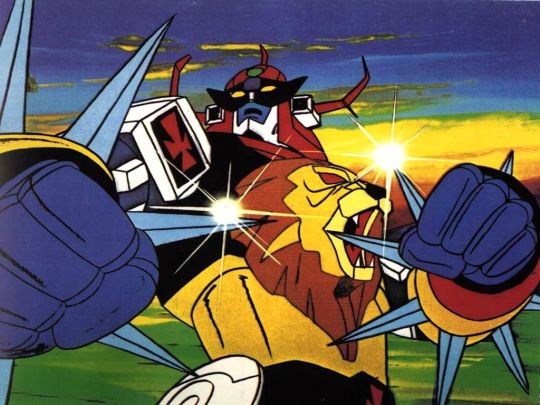
Japanese poster for the film Locke The Superman
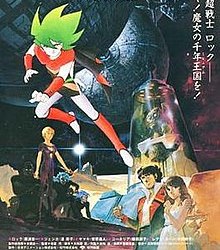
My say about this:
I had watched,as a teenager,an anime based on the manga.I guess I was stunned by the intricate story and the whole way of such science fiction.All this is manga of 101 tankobon!! Rest in Peace sensei. Likely you didn’t finish it off,however you’re leaving from us having your head Up and Clear,Prideful:)
#Yuki Hijiri#Hijiri Yuki#聖ゆき#Locke The Superman#Fighting General Daimos#Tōshō Daimos#闘将ダイモス#Chōjin Rokku#超人ロック#Voltes 5 Anime#Super Electromagnetic Machine Voltes V#TV Asahi#Future Robot Daltanious#未来ロボ ダルタニアス#Shonen manga#intricate manga#greenhaired man#young king comics#超電磁マシーン ボルテスV#Nagahama Tadao#長浜 忠夫#Combattler V#Chōdenji Robo Combattler V#(超電磁ロボ コン・バトラーV#mecha anime#Super Electromagnetic Robot Combattler V
1 note
·
View note
Text


The Rose of Versailles | ベルサイユのばら (1979) dir. Tadao Nagahama & Osamu Dezaki
741 notes
·
View notes
Text


Lady Oscar.
8 notes
·
View notes
Note
i saw your post on Daltanious so I'd like to ask something. Is Daltanious really considered number 4 of the RRR? I mean sure Nagahama made it but he left it to work on The rose of Versailles so someone else directed it. The anime's vibe is...nothing like Voltes or Daimos, it feels like it's aimed at kids. The main villain isn't sympathetic like Heinel, Richter or Garuda, he's just a jerk. Yeah he has a tragic backstory but he still feels like he's too cruel to feel sad for. Kento as a main character is very rude and obnoxious and nothing like most Nagahama protags. The TV Tropes page even says he's "Kenichi if his IQ dropped". I don't mean any disrespect! I'm just questioning why it's called that because it's nothing like most of those anime. Also, you're a fellow Lotura shipper, nice
Hi Anon, thank you for the Ask!
Those are great points, and to be honest, I'm not sure why I've seen Daltanious described as the unofficial 4th "Robot Romance", but I suspect it has to do with Nagahama fans not wanting anything with a mecha in it that he touched to be forgotten.
I've seen Daltanious mentioned in that way a few times, in at least one art book, and on several fan sites (Japanese).
The art book/guide that I have handy is the one pictured below, where you can see Daltanious on the cover behind Combattler V, Daimos, and Voltes. It's in the title as well at the top, and in English at the bottom.

It's definitely very weird, and maybe one day I'll dig around to find a better answer!
3 notes
·
View notes
Text
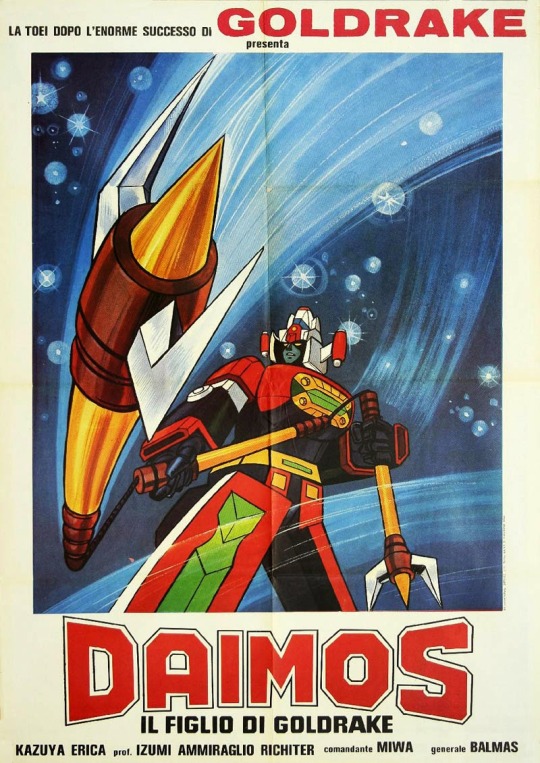
Daimos - Il figlio di Goldrake (Japan/Italy, 1979 dir: Tadao Nagahama).
#science fiction#anime#mecha#film#poster#Daimos - Il figlio di Goldrake#Tōshō Daimos#闘将ダイモス#Japan#Italy#1979
67 notes
·
View notes
Note
If you love Gundam 0079, I implore you to check out Tadao Nagahama's Robot Romance trilogy (Combattler V, Voltes V, Daimos)! Tomino worked under Nagahama as a storyboarder and I feel you can see his work being a culmination of these show's themes for stuff like Zambot 3 and later on, Mobile Suit Gundam. Daimos in particular I would describe as one of the first shojo mecha
Oh good to know! In complete honesty I have always intended to watch more robot stuff after Gundam... Gundam is just taking a while LOL
5 notes
·
View notes
Text
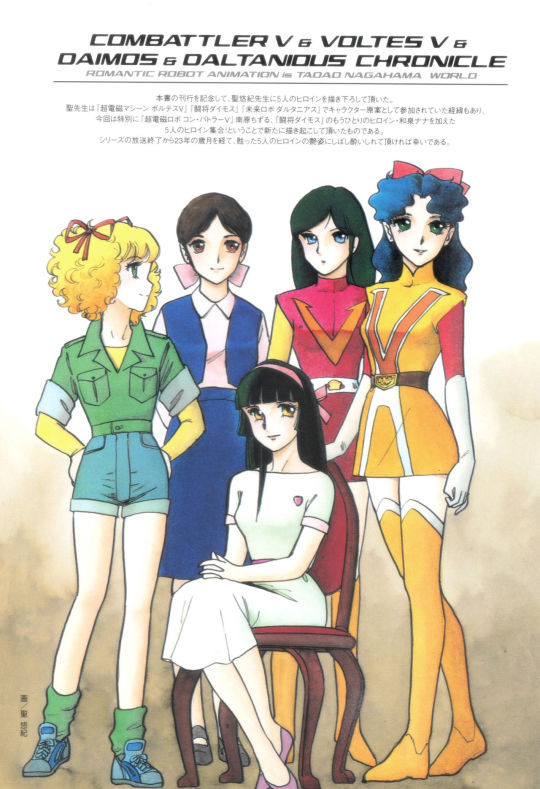
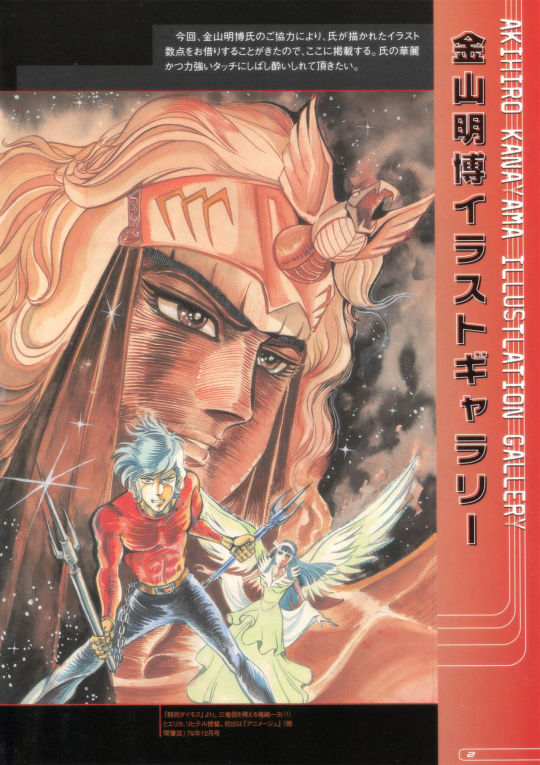

art from the Tadao Nagahama - Romantic Robot Animation Chronicle infobook!!
30 notes
·
View notes
Text
rewatching gundam 0079 through the compilation films
I'd really like to see more contemporary anime intentionally go for the tonal disconnect that occurs accidentally within this (and early ryousuke takahashi stuff and tadao nagahama robot romance series and so on) where you have real melodrama and emotional conflict within the main cast and an attempt to represent the horrors of war
but also it's the 70s and everything is in bright primary colours and looks like (and is) a child's toybox
nothing quite hits like the cheery, jazzy 'moeagare moeagare moeagareee gundamuuu' opening followed by an episode of amuro wandering his shattered childhood home, now occupied by drunk federation troops - ending with his mother telling him she's ashamed of him for being a murderer.
2 notes
·
View notes
Text
An Abbreviated History of Mecha Addendum 1: Assemble the Forces!

Welcome to the first addendum to An Abbreviated History of Mecha! Today, we'll be looking at some of the media that came out in the 70's and before. A lot of the shows covered here are ones that were fairly big in their own right, especially when compared to the juggernauts of the era like Ultraman, Mazinger Z, and Getter Robo. What should also not surprise anyone with a lot of the shows listed here is that a bunch of the shows listed here have one Go Nagai and Dynamic Planning attached to them in some manner.
Because of course he is.
And I should note: unlike in An Abbreviated History of Mecha proper, the addendums will not be listing these entries in chronological order. This primarily because a) I need to get back into the groove of writing one-off posts (especially after The Devil That is Capitalism), and b) there are a lot of things that slipped out of the cracks, and I treasure my sanity.
Anyways, let's get down to brass tacks.
Daiku Maryu Gaiking (1976) and Gaiking: The Legend of Daiku Maryu (2005)

Daiku Maryu Gaiking (or Dino Mech Gaiking) is a 1976 giant robot series known for having plots take place in real world locations outside of Japan and also for featuring the first ever use of a carrier ship for the titular giant robot Gaiking. Gaiking is also somewhat infamous due to Toei trying their absolute hardest not to pay Go Nagai since he and Dynamic Planning created the series.
Toei would revisit Gaiking in 2005 with the release of Gaiking: the Legend of Daiku Maryu, which would feature a largely unchanged Gaiking and Daiku Maryu but feature a completely different main character.
Kotetsu Jeeg/Steel Jeeg (1975) and Kotetsushin Jeeg (2007)

Created by Go Nagai immediately following the success of Mazinger Z and Great Mazinger, Kotetsu Jeeg alongside its sibling series UFO Robot Grendizer would help to cement Nagai's legacy as one of the big mecha creators in the canon. Kotetsu Jeeg would receive a sequel in 2007, Kotetsushin Jeeg. The sequel was directed by Jun Kawagoe of Getter Robo Armageddon and Mazinkaiser SKL fame and features JAM Project performing the OP Stormbringer.
In other words, Kotetsu Jeeg beat Mazinger Z to the punch with the distant sequel. Or I guess you could say it beat Mazinger Z to the rocket punch?
Eh? Get it? No? Okay...
Planetary Robot Danguard Ace (1977)

Danguard Ace is one of the many mecha shows that came out in the wake of giants like Mazinger Z and Getter Robo. This series is noteworthy for being Leiji Matsumoto's first and only foray into the giant robot genre of mecha.
And hey, guess who's currently the owner of the Danguard Ace property?
It's Go Nagai and Dynamic Planning.
Abassador Magma (1965)

Ambassador Magma is a manga series created by Osamu Tezuka. It would also receive a tokusatsu series shortly after, with one of its big accomplishments being that it would be the first tokusatsu series aired in color. Specifically, it would beat honorary mecha show Ultraman to the punch by about six days.
Invincible Robot Trider G7 (1980)

Something to always keep in mind with the history of mecha is that Mobile Suit Gundam was not initially a hit. Invincible Robot Trider G7 serves as a good reminder of this, as it was an anime series produced by Sotsu (as in the very same Sotsu that also produced the original Gundam alongside Sunrise). Airing at around the same time as Space Runaway Ideon, Trider G7 would mark the beginning of giant robots being used in the deep recesses of space alongside Ideon.
Future Robot Daltanious (1979)

I couldn't find a good gif for Daltanious without watching the series myself, so we'll have to make do with this promotional image instead.
Future Robot Daltanious is a 1979 anime series that had Tadao Nagahama as its original director for its first couple of episodes before he left to direct the seminal Shoujo series The Rose of Versailles (a series that really should be treated as an honorary mecha series due to its influence on anime and manga as a whole). Even though he only worked on the series for about thirteen episodes and passed away before he could come back to work on it, Daltanious is still treated as one of his shows alongside Combattler V, Voltes V, and Daimos.
Daltanious is also an important series for those familiar with the Brave franchise, as Daltanious is the design inspiration for both Exkaiser and GaoGaiGar.
Super Robot Red Baron (1973) and Super Robot Mach Baron (1974)

Super Robot Red Baron would come onto the scene in 1973 as the giant robot tokusatsu shows would wane in abundance due to their expensive natures. Red Baron, and later its sequel series Mach Baron, would serve as a sort of swan song as it would also have to compete with one Mazinger Z for the hearts of children all across Japan. Giant robot tokusatsu wouldn't go away altogether though, and we'd see this with the next and arguably one of the weirdest entries both here and in the canon of comic book history.
Toei Spider-Man (1978)

In cooperation with Marvel Comics (yes really), Toei would put out their own version of Spider-Man towards the end of the 70's. Note that this is specifically in a post-Kamen Rider/Super Sentai world, so Spider-Man in this series is less "quippy teenager living up to his uncles words about great power and great responsibility" and more "the warrior of hell fighting aliens" (although, I'm pretty sure either Peter Parker or Miles Morales have fought the forces of hell at this point).
Also Spider-Man in the Toei series pilots a giant robot named Leopardon to fight giant alien monsters. This may be funny, but Leopardon is important because it is what inspires Super Sentai to include giant robots in all of their future shows.
Also, to the folks at Marvel. Sony and the production crew behind the Spiderverse films: when are we going to get Toei Spider-Man in the Spiderverse films?
Jumbo Machinder/Shogun Warriors

Image source: Shogun Warriors unofficial website
Finally, to round out today's post, how could I not mention the Jumbo Machinder line of toys. All jumbo machinder was was a line of toys based off of popular giant robot shows like Mazinger Z, Gettero Robo G, Brave Raideen, Gaiking, and many more (also Godzilla and Rodan had their own machinder toys). The toys all came with spring-loaded projectiles and were immensely popular with kids back in the day.
Mattel would eventually get the distribution rights to these toys, bringing them over to the US as the Shogun Warriors. Mattel would also ask Marvel Comics to write a comic series for the Shogun Warriors that would explain why all of these largely unrelated giant robots were working together.
Thank you for reading this addendum to An Abbreviated History of Mecha. Normally, I'd do a conclusion section, but I feel like I'd have to follow up with another Addendum post.
#anime and manga#mecha#an abbreviated history of mecha#anime history#daiku maryu gaiking#gaiking#kotetsu jeeg#steel jeeg#danguard ace#ambassador magma#trider g7#future soldier daltanious#toei spider man#spiderman#shogun warriors#super robot red baron#jumbo machinder
0 notes
Text

Há exatos 44 anos, Tadao Nagahama partia para as estrelas: homenagem ao diretor da primeira metade do anime Rosa de Versalhes:
#berubara#rose of versailles#versailles no bara#shoujo manga#the rose of versailles#shoujo anime#la rosa de versalles#berubah
0 notes
Photo
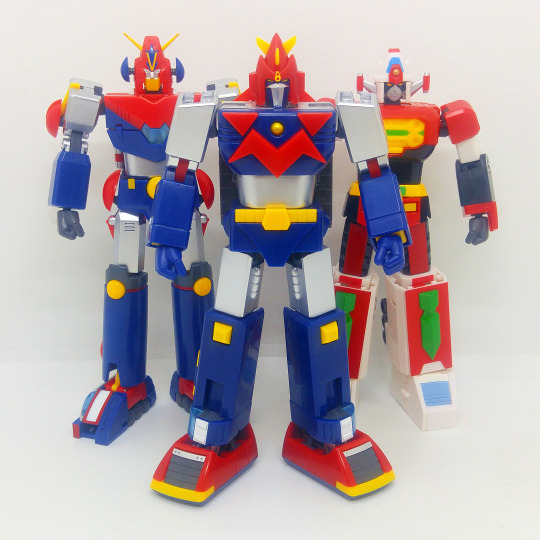
Robot Romance Trilogy (長浜ロマンロボシリーズ)
#Robot Romance Trilogy#長浜ロマンロボシリーズ#Tadao Nagahama#Nagahama Tadao#長浜 忠夫#Super Electromagnetic Robot Combattler V#Combattler V#超電磁ロボ コン・バトラーV#バトラーV#Mini Action Com-Battler V#コン・バトラーV#Voltes 5#Voltes V#super electromagnetic machine voltes v#voltus v#voltus 5#vultus 5#Mini Action Voltes V#Daimos#ダイモス#闘将ダイモス#toy photography#Action Toys Mini Action Series#Action Toys#Mini Action Series#Mini Action Daimos
10 notes
·
View notes
Text


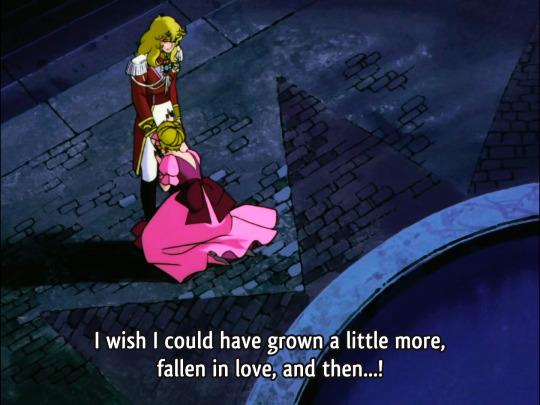
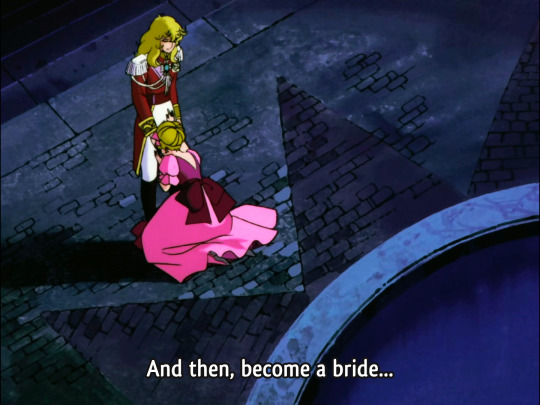

The Rose of Versailles | ベルサイユのばら (1979) dir. Tadao Nagahama & Osamu Dezaki
360 notes
·
View notes
Note
omg you have the robot romance + daltanious art and infobook! can you upload pictures please? im from a third world country and i cant buy it on amazon. once again thank youuuuu! what did you like about the book?
Hi Anon, thank you for the Ask!
The book—called "Tadao Nagahama's Romantic Robot Animation" (長滇忠夫ロマンロボットアニメの世界)—is mostly a digest guide with series and episode summaries, monster-of-the-week guide, staff interviews, summary of other materials (such as manga), and some illustrations (sketches, mechanical designs, and settei) from each of the series with some description.
Much larger images (including some of the same images in this book) can be found in the Roman albums (art books) that were released for each of the series. Unfortunately, the Daltanious section uses scenes from the animation for most of its content rather than illustrations.
I like the monster guides the most. They are a concise way to look at all of the monsters at one time. It is interesting to see the progression of designs across the different series.
Below is an example of what one of the spreads from the Tōshō Daimos section looks like. This one is about some of the vehicles that appear in the show and which episodes they are in. The Triper 75S is in the lower right, and it's such a fun design. That would be a fun model kit to have.

I don't have a lot of energy/focus for scanning art books, but if there is something specific you are looking for, then let me know and maybe I can find it.
#tadao nagahama#robot romance#combattler v#voltes v#tosho daimos#daltanious#mecha#ask me anything#anonymous
5 notes
·
View notes
Photo

Today in Anime History
June 4th, 1977
Chōdenji Machine Voltes V premieres. It is the second series in the Robot Romance Triology, succeeding Combattler V.
Created by Saburo Yatsude, directed by Tadao Nagahama and produced by Yoshiyuki Tomino
22 notes
·
View notes
Photo

Chodenji Machine Voltes V by Kazuhiro Ochi
75 notes
·
View notes
Text
On the anti-imperialist roots of the Super Robot genre

Tadao Nagahama is probably not a name you're familiar with. I won't reproach you for it, it's been a while, I had to look it up myself to help me remember. However, Nagahama is an extremely important person for my current subject of discussion: the anti-imperialist, anti-war roots of the Super Robot genre. Shinzo Abe, the current prime minister of Japan, probably most widely known in the west for wearing a Mario hat to promote the next olympic games, has been in his own quiet (and not so quiet) way contributing to the rise of hard right nationalism, historical revisionism, fascism, and a whole bunch of other nasty isms that have found traction in today's sociopolitical climate. Recently, I saw in passing a tweet about how the ever-popular, ever-mystifying Kancolle had an episode where Japan ended up winning the battle of Midway. Propaganda in media is nothing new, but that was quite egregious, even by my desensitized standards. It got me thinking a little bit about my own niche anime interests and how the common perception of the mecha genre is probably one either of random Gurren Lagann bullshit or simplistic, thinly veiled pro-Japan ideology packaged in a kid friendly, larger than life veneer. In a lot of ways, early Super Robots shared more in common with classical American Super Heroes than actual Japanese Super Heroes like Kamen Rider, which evolved into their own tokusatsu genre quite distinct from either paradigm.
I cannot rightly dispute these preconceptions as wrong, but I do want to at least bring up that some early, influential franchises rejected this narrative. One of the first of these, of course, is Mobile Suit Gundam. While now we have the distinction between Super Robot (robots that are like larger than life super heroes) and Real Robot (robots that are presented in a realistic context as weapons of war using standardized technology employed by military and paramilitary forces to project force) for tedious nerds to bicker over indefinitely, in the days of the original Gundam, that distinction did not exist. Indeed, to play for ratings, Yoshiyuki Tomino, famed creator of the Gundam franchise, had to make many concessions to his sponsors and make Amuro Ray's Gundam more like its more popular contemporaries, with goofy mid-season combination upgrades and some extremely anachronistic weaponry like a beam trident and a huge, MS sized ball and chain. On the back of his later success, Zeta Gundam and the seemingly never ending number of side-stories like War in the Pocket and Stardust Memory, Tomino would actually go on to revise the original series in a definitive movie compilation that cut out a great deal of filler and blatantly unrealistic (or at least immersion breaking) elements. This version is extremely good by the way. Give it a watch if you're interested in the genre's history or if you just like old sci-fi.
The reason I bring this up is sort of my roundabout way of arguing that while the Gundam of today is made of entirely different stock than Super Robots, the original article deserves a space in this discussion. The discussion being, of course, the distinctly anti-nationalist bent of a lot of early Super Robot shows. In all of its many incarnations, good, bad, and inbetween, Gundam is a story about war really sucking and how tragic it is that we fail to understand one another because it's easier to just kill one another instead. Now, of course, a lot of fans are either too thick to understand this subtext (and text-text) or simply willfully disregard it because they like cool robots that shoot lasers. Basically think of Dan Ryckert's relationship with Metal Gear. While certainly not all Gundam series have been good, they have always been faithful to these ideas, which is laudable. In broad strokes, anyway. SEED Destiny was pretty weird in spots.
Mobile Suit Gundam 079, which chronicled the One Year War, was not at all shy about this. The One Year War began as a movement for Spacenoid (a slightly ridiculous term for a person living in a space colony or on the moon) independence from the hopelessly corrupt Earth Federation. Naturally, the Federation did not take kindly to this and moved to suppress the movement, but found itself overmatched by the Principality of Zeon's advanced Mobile Suit weapons. To keep an even footing in the war, the Federation resorted to using nuclear weapons and other atrocities on largely civillian colonies to buy time as they developed their own brand of Mobile Suit. In retaliation, Zeon counterattacked with an even more devastating new weapon: dropping space colonies on earth. All told, the One Year War was not a good time to be alive, and nearly half of the Earth Sphere's total population died in one way or another. While all this was happening, the original founder of the independence movement died under suspect circumstances and power was seized by the Zabi family, who were Really Bad News. The Federation, meanwhile, turned to conscripting child soldiers in a desperate bid to keep pace.
This all culminated in the creation of the Gundam by Tem Ray, Amuro's emotionally absent father. Due to Circumstances, Amuro finds himself in the cockpit and becomes the most important soldier in the war overnight because the Gundam is several orders of magnitude more powerful than anything Zeon can field. The character of Amuro is explored most fully in Char's Counterattack, when he is a fucked up adult instead of a fucked up kid, but from the outset, Amuro is defined by forces completely out of his control and his fatalistic acceptance of his own lack of agency. Despite his nigh legendary piloting skills, Newtype powers of precognition and telepathy, and status as hero of the One Year War, Amuro might actually be the most passive motherfucker in the god damned galaxy. This puts him immediately at odds not only militarily but interpersonally with the dreadfully overambitious if mostly well-intentioned Char Aznable, his lifelong rival. Their entire history of conflict is based entirely upon the simple irony that they both want the same thing but, despite being Newtypes, lack the ability to understand this. The One Year War's violence and brutality defined them and their relationship to another, because of a petty twist of fate that put Amuro in the Gundam's pilot seat instead of some other sap.
Gundam uses many more overt methods of conveying that the One Year War is not glamorous or cool or just. Characters die regularly on both sides of the conflict, oftentimes for no real reason other than "this is war, sucker." Tomino developed quite a reputation for this style of storytelling, earning the moniker Kill-'em-all Tomino, especially in some of his non-Gundam works like Aura Battler Dunbine and Space Runaway Ideon. The entire continent of Australia got rendered uninhabitable by colony drops. The White Base, the federation battleship housing the Gundam, is crewed and staffed almost entirely by people who have yet to reach 20 years of age and they've got a pack of prepubescent toddlers running around on the ship because they've got nowhere else to go. I personally find the interpersonal conflicts acting as microcosm for ideology and war to be the most interesting, and most intrinsically Gundam thing about the franchise, but you don't have to go looking between the lines to find evidence of the show's ardent anti-war, anti-nationalist proclivities. The intensely nationalistic Zeon is surreptitiously usurped by a power-mad dictator without anyone even catching on after Ghiren Zabi uses a giant ass space laser to kill both his father and an influential Earth Federation general while they're trying to broker a peace deal. The death of that general, in turn, allows the worst elements of the Federation government to run amok and eventually create the deeply fascist Titans in Zeta Gundam, who make it a point of policy to oppress spacenoids as brutally as possible.
So Gundam, at least, has profound roots in the denunciation of military power as a metric of moral superiority. That's not really news to most people. Oddly enough, it's the most obsessive of fans that tend to miss the memo because they're presumably too busy making sure Mobile Suit measurements are exactly as documented and all character motivations are completely rational and logical, like them. Let's dig a little deeper for some more surprising examples of this kind of ideology in unlikely places. It should be noted, of course, that I am not heralding Gundam as some sort of bastion of progressive thought. Tomino's sexual politics are located roughly in the Stone Age until about 2000's Turn A Gundam, where they progress to about on par with inudstrial revolution social mores. Progress, I suppose. This is a problem with a distressing amount of media, especially in the 70s and 80s, but I'm trying to look at the bright side of things. At least it's not Cross Ange, right?
Moving on, when we look at the genesis of Super Robots as a genre of animation, we will invariably look to Go Nagai. Though a number of shows about large robot men fighting evil like Tetsujin 28 and the live action Giant Robo came first, the seminal Mazinger Z had the popularity and iconic staying power to define everything that came after. Though I could write a great deal about Go Nagai and his Dynamic Robots, they don't really pertain to my particular topic of discussion today because Go Nagai was about as progressive as a sack of bricks. His work was largely apolitical, at least in the sense that he did not intentionally make his stories about contemporary political issues, so at very least Kouji Kabuto never waxed nostalgic about the time Japan was allied with Nazi Germany. In fact, one of the show's major villains, Count Brocken, is a reanimated SS officer cyborg who carries his head around with him because of a decapitation in a previous life. Generally speaking, not a good or sympathetic guy, despite his protests to the contrary. Go Nagai focused on themes of brotherhood and being outcast by society for just being too damn hotblooded and having sideburns that were just too damn thick, though these mostly manifested in his manga. The TV adaptations of Mazinger, Getter Robo, and Grendizer were largely sanitized and inoffensive.
I mentioned Tadao Nagahama at the beginning of my piece, and it is now with him we come to a very important point in the genre's history. Nagahama was the director of three particular Super Robot shows: Combattler V, Voltes V (here the V is treated as the roman numeral, so it's really Voltes 5), and Toushou Daimos (roughly, Brave Leader Daimos). Colloquially, these three are known as the Nagahama Romantic Trilogy, and they are denoted not only by the iconic designs of the robots themselves, towering, blocky things made out of many constituent parts in a fairly sensical way (as opposed to the famously Unpossible Getter Robo), but also by the injection of genuine interpersonal and ideological drama into the proceedings. They were also super popular in other areas of the world, much like Go Nagai's Dynamic Robots. Voltes V in particular was popular in Southeast Asia. Combattler V was instrumental in cementing the notion of The Honorable Rival in the genre, a character aligned with evil that still conducted themselves with decorum. While you would find few such characters in the ranks of Dr. Hell's armies or King Vega's invasion force, in the Romantic Trilogy, they were critical to the show's success. Combattler V was not especially revolutionary, but it laid the groundwork for Voltes V, which in many ways was.
Voltes V is the tale of the Boazan Empire, an interstellar civilization with an expansionist streak and a highly stratified caste system. Unlike previous villainous organizations, the Boazans are noteworthy for being three dimensional and not painted in shades of black and white. The Boazans invade earth for the purposes of annexing it to their growing empire, with the crown prince Hainel leading the charge. Their battle beasts are too much for earth's military (and the militaries of many other planets), but the super electromagnetic robot Voltes V, piloted by a team of five headed by Kenichi, appears to beat them back. Things become interesting when we learn about Kenichi and his two brother's lineage. Their father, the brilliant scientist behind Voltes V's construction, is actually a Boazan expatriate. Not just any expatriate, but former royalty, no less. Boazan's strict caste system is based solely upon whether or not a citizen has horns. If they do, they're nobility. If they don't, well, uh, sucks to be them. Such a system, already untenable, is exacerbated by the fact that the vast majority of Boazans don't have horns. It's a rare genetic mutation. The whole Boazan war machine is powered by a gigantic underclass of slaves-in-everything-but-name. Kenichi's father believed that this was morally reprehensible and that reform was necessary. Unfortunately, this was not a popular opinion among the nobility, and he was disgraced, de-horned, and ousted for his ties to rebellion movements.
Complicating matters even further, he had a son while on Boazan, the aforementioned Prince Hainel. After relocating to Earth to escape persecution and devise some way of bringing change to the empire, Kenichi's father settled down and had a family. Now bereft of horn, he was largely indistinguishable from the average earthling. Parallel evolution is a concept emrbaced heartily by old sci-fi in both Western and Japanese media, probably because people thought alien babes were hot. Fair, honestly. At any rate, Kenichi engages in mortal combat with his half-brother's forces on a regular basis, which creates interpersonal tension mostly lacking in earlier shows. Sometimes Duke Freed got snippy at Kouji for being all love and peace at the Vegans but that was usually resolved at the end of the episode. Hainel himself gradually changes, too, starting out as arrogant, dismissive, and openly ashamed of his connection to a disgraced expatriate and his sons but gaining more depth as time goes on. The end of the show takes place on Boazan itself, with Voltes V spearheading a hornless revolution while Hainel turns on the emperor, vengeful and disgusted by his cowardice. Or maybe it was a movie. Look it's been a long time and I'm going from memory give me a break.
For a kid's TV show at the time, this was honestly pretty wild. Voltes V was not shy about displaying its moral core: people are not defined by the circumstances of their birth, and systems of government based upon the oppression of an underclass deserve only to be destroyed. Voltes V is not as morally complex as Gundam, but it is leaps and bounds ahead of many of its Super Robot contemporaries. Nagahama believed in a sort of fusion of genuine human drama and moral complexity with the more simplistic, bombastic style of storytelling common to his predecessors, and it resonated with viewers all over the globe. At the time of airing, a number of Southeast Asian countries were under the thumb of repressive dictatorships, and the final episodes had to be heavily censored and edited so as not to promote seditious ideas. That, more than anything to me, is the mark of something that is genuinely anti-nationalist in nature. Who would know better than fascist dictators themselves?
The final entry in the Romantic Trilogy, Toushou Daimos, continued the trend of creating morally and politically complex circumstances in which the karate robot made of transforming trucks must punch bad guys. The aliens of the day are the Barmians. The Barmians, however, buck convention and come to earth in genuine peace. Their story is a tragic one - their planet was destroyed in a catastrophe, and the survivors were evacuated on the aptly named mobile space city Small Barm. Due to severe space and resource constraints, a billion Barmians have to remain in cryogenic sleep while a skeleton crew of nobles and military officials keep Small Barm afloat as they search for a place to live. Naturally, they find earth to be a charming place as any to settle down (as it must have seemed in the early 80s before the environment started collapsing) and initiate negotiations with the governments of earth to try and accommodate their people. Expert martial artist and principle protagonist Ryuzaki Kazuya is the son of a brilliant scientist who created the robot Daimos and the special Daimolight energy that makes it so scary strong. Said scientist is part of the diplomatic delegation sent from earth to Small Barm (in some universes alongside the illustrious Rilina Peacecraft, but that is a story for another time entirely) and is a major proponent of the Barmian's request for peaceful integration into earthling society.
Regrettably, this all goes awry when the Barmian hardliner military faction assassinates the King of Barm during the meeting with poison and blames the earthling delegation on it, engineering their own perfect casus beli for a war of domination against Earth. Fascists are remarkably bad at sharing and getting along with others, as has been demonstrated. Prince Richter, the honorable if somewhat dim and hot tempered son of the King wasn't too hot on the assimilation idea because of his prideful belief that the superiority of Barm's culture and technology should allow them to dictate more favorable terms, but was ultimately loyal to his father above all else and acquiesced to the idea. When his father is assassinated, of course, he flies into a rage and declares earth to be the enemy of Barm and kills Kazuya's father. So there's a lot of bad blood between the two of them. Kazuya and Daimos stand up against Barm's battle beasts and prevents the invasion from progressing. He eventually meets and falls in love with princess Erika, Richter's sister. Where Richter is brash and hasty, Erika is intelligent and patient, and much more compassionate. These qualities allow her to see that the circumstances of the King's death, and any motivation the Earthling's might have had to assassinate him, were extremely suspect. They part ways, but Erika eventually joins a resistance faction on Small Barm against the military hardliners who had assumed power. Richter continues to dance to their tune, too consumed by misplaced anger and vengeance to see what is really going on. Erika's relationship with Kazuya only makes him more unreasonably mad.
Of course, Earth has its own hardliners, and in his battles, Kazuya not only has to contend with Barm's battle beasts, but General Miwa, an odious Earth-supremacist convinced that all Barmians, regardless of their disposition, must be eliminated immediately and without mercy. If we want to talk about more alternate universe scenarios, for reference, Miwa was a fucked up enough dude to cast his lot in with the Blue Cosmos organization after his Barmian extermination ambitions never panned out. He really fucking sucks. Ultimately, Kazuya and Erika manage to uncover the plot to assassinate the King, defeat the military holdouts, and bring the peace their fathers wanted about. Where Voltes V presented a scenario of a civilization run by ultra-nationalists needing to be restructured from the ground up, Daimos offers the inverse: a peaceful, tolerant civilization in a time of crisis gets hijacked by a few selfish, warmongering fascists and nearly destroys itself. Coming to understand and love one another, even when from different planets entirely, is an even bigger theme in Daimos than Voltes V, and is in many ways a more personal story. A romance, if you will, for a romantic trilogy.
Nagahama's Romantic Robots were well loved around the globe and left a lasting impact on their genre, encouraging those who came after to experiment with more complex themes and characters, even in the larger than life universe of Super Robots. While not all (or even very many) of these successors live up to this high minded ideal, it's an important part of the history of Japanese animation, proving that drama and politics were not just for Gundam or more "serious" shows. We can see the legacy of Nagahama in a number of more contemporary titles. Evangelion is so much more about interpersonal conflict than actual robots that the final episode of the TV series didn't even have any fighting in it (albeit mostly due to budget constraints). People hated it, of course, and Hideki Anno went on to make End of Evangelion to either appease or piss off further the angry fans, but it happened nonetheless. Gun X Sword represents an evolution of the genre into that of a pseudo-western, where heroes and villains are separated by the thinnest of ideological margins despite the fantastical robots and setting. Gurren Lagann briefly flirts with political complexity before promptly imploding on itself (maybe this one is a bad example). Even Shin Mazinger, an unabashed love letter to older Go Nagai properties, managed to create a surprisingly affecting and compelling character (dare I say, Protagonist?) in its reimagining of Baron Ashura.
The Mecha Genre used to be, and still kind of is, one of my big guilty passions in life. This essay is more personal in nature than a lot of my others, because from time to time I feel like I have to justify to myself why I like this garbage even when it's weird regressive shit. I guess the compromise I have found is that, in certain circumstances, it can be weird progressive shit, too.
17 notes
·
View notes